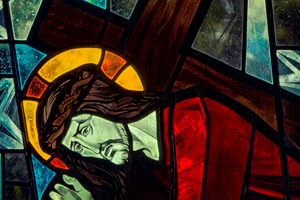 In Luke’s portrayal of the Passion Jesus remains a simple, humble, peaceful man despite all that happens. The hallmarks of innocence, righteousness, suffering servant are his and even in his suffering he refuses temptation, is the cause of conversion and reconciliation, the giver of mercy and ultimately, of life itself. Jesus acts with dignity and complete faith in God.
In Luke’s portrayal of the Passion Jesus remains a simple, humble, peaceful man despite all that happens. The hallmarks of innocence, righteousness, suffering servant are his and even in his suffering he refuses temptation, is the cause of conversion and reconciliation, the giver of mercy and ultimately, of life itself. Jesus acts with dignity and complete faith in God.
As we follow the story, the crowd, the good thief and the centurion are won over (converted) by what they ‘see’ happening before their eyes. The leaders are not.
It begs the question about what we have ‘seen’ on our journey during Lent. Are we still the same as we were before, or have we, too, been swept up in the unfolding story of God’s graciousness to humanity? Have our hearts been melted, our judgements softened, our faith deepened?
In a way, Luke’s passion is a summary of all that we have heard and seen in the Gospels of Lent. Jesus is
the righteous one who keeps faith with God in the temptations in the wilderness
the One ‘shot-through-with’ the presence of God in the transfiguration
the one who shows that there is a way out of sin through repentance and forgiveness - we are not damned for ever
the one who proclaims God’s lavish forgiveness and mercy in the parables of the fig tree and the forgiving father
the one who is God’s mercy-in-action for scribes, Pharisees and the adulterous woman
the one who refuses to hold sin against people in his prayer for his enemies on the Cross
the one who announces forgiveness and mercy on the Father’s behalf for the 'good' theif
God's-mercy-in-action for the crowd, his followers and the Centurion
a ’living’ Gospel of the story of God’s relationship with us.
Jesus takes up the mission of standing in God’s place in human history and showing, in his passion and death, the depth of God’s love and the power which comes from faith.














